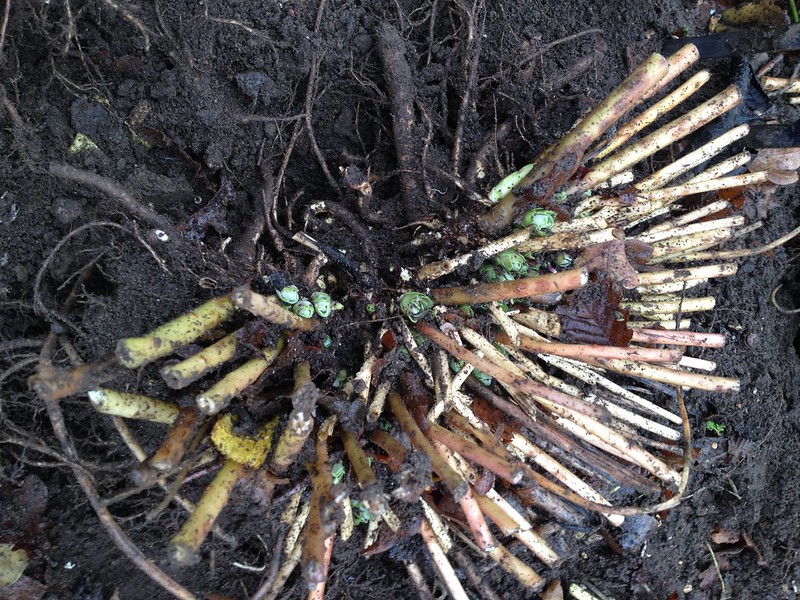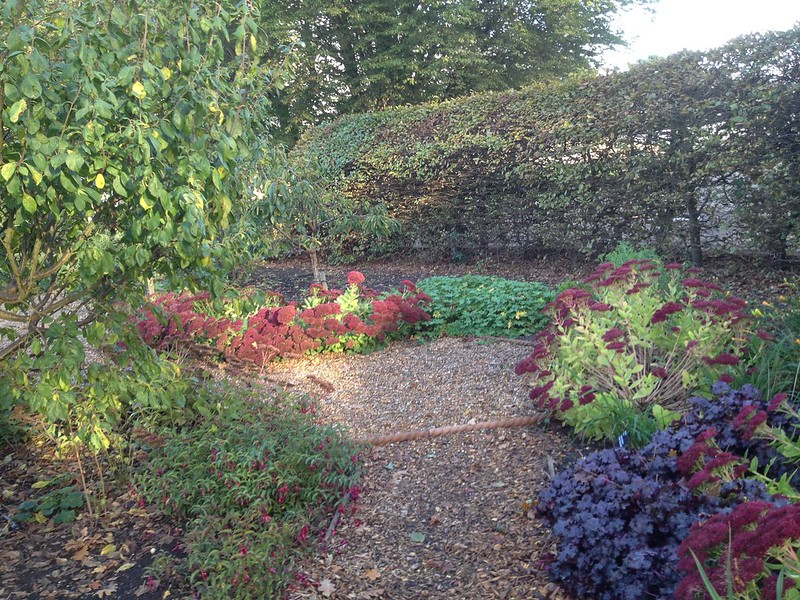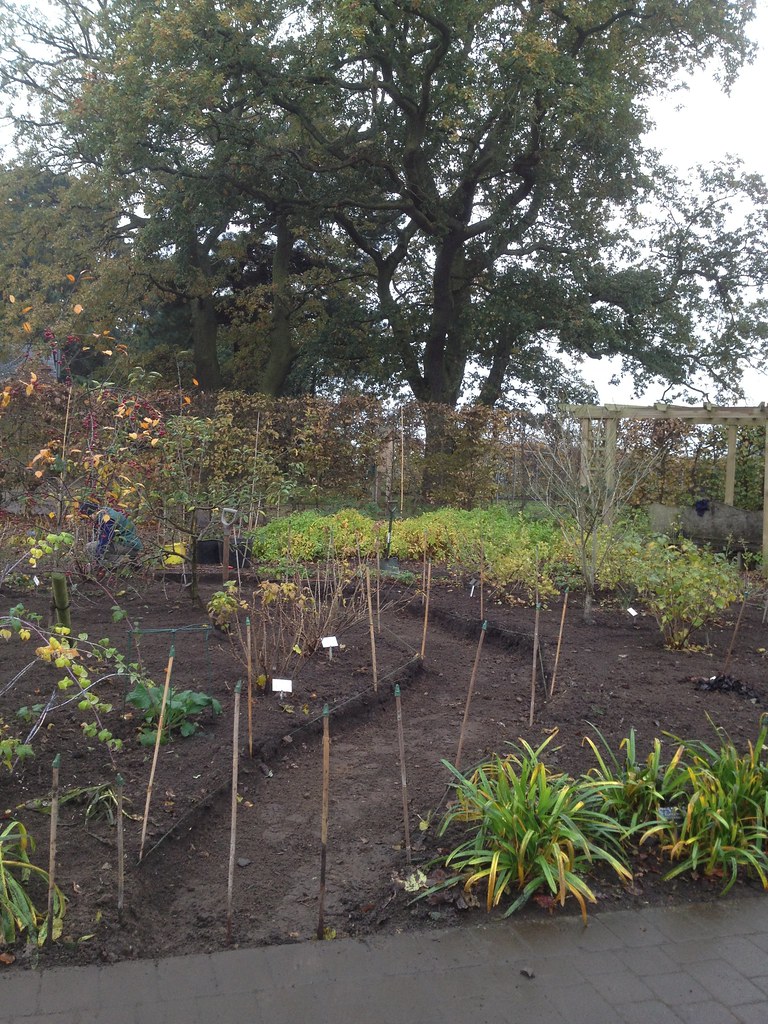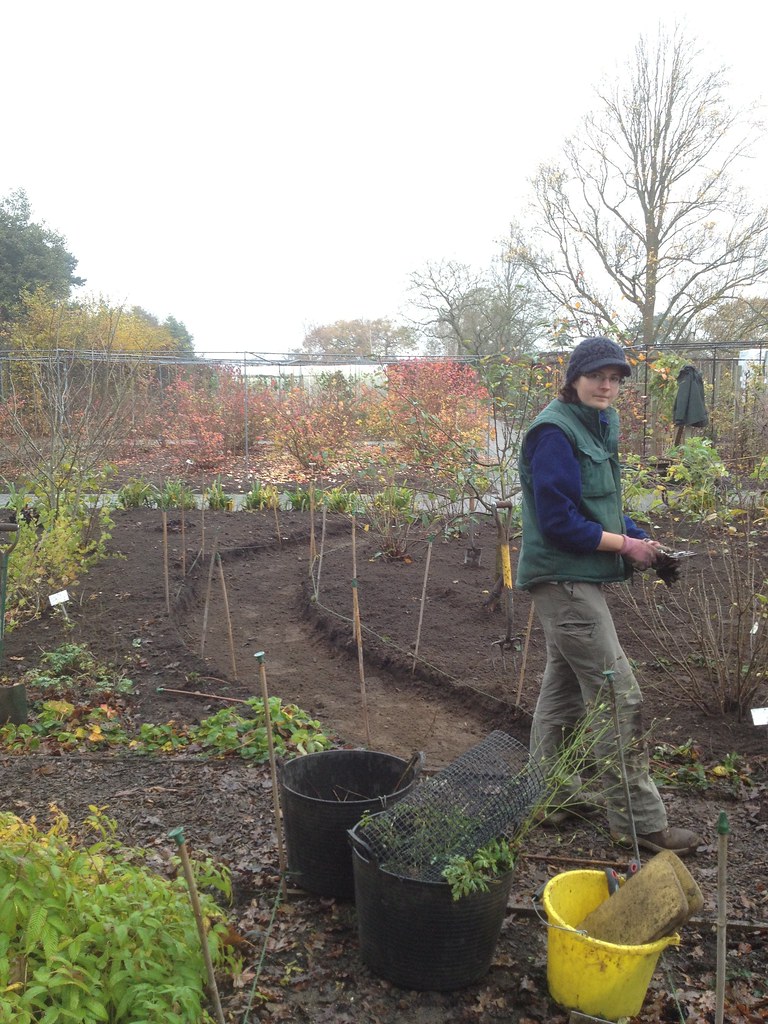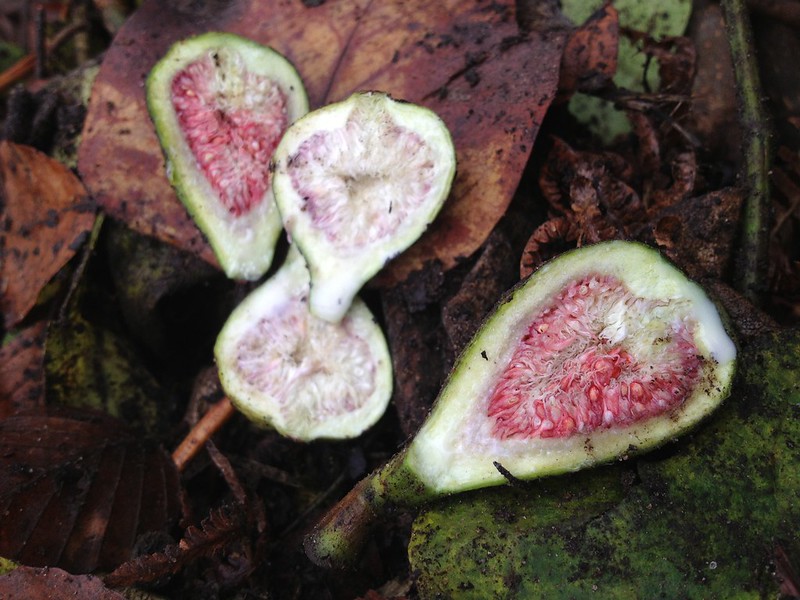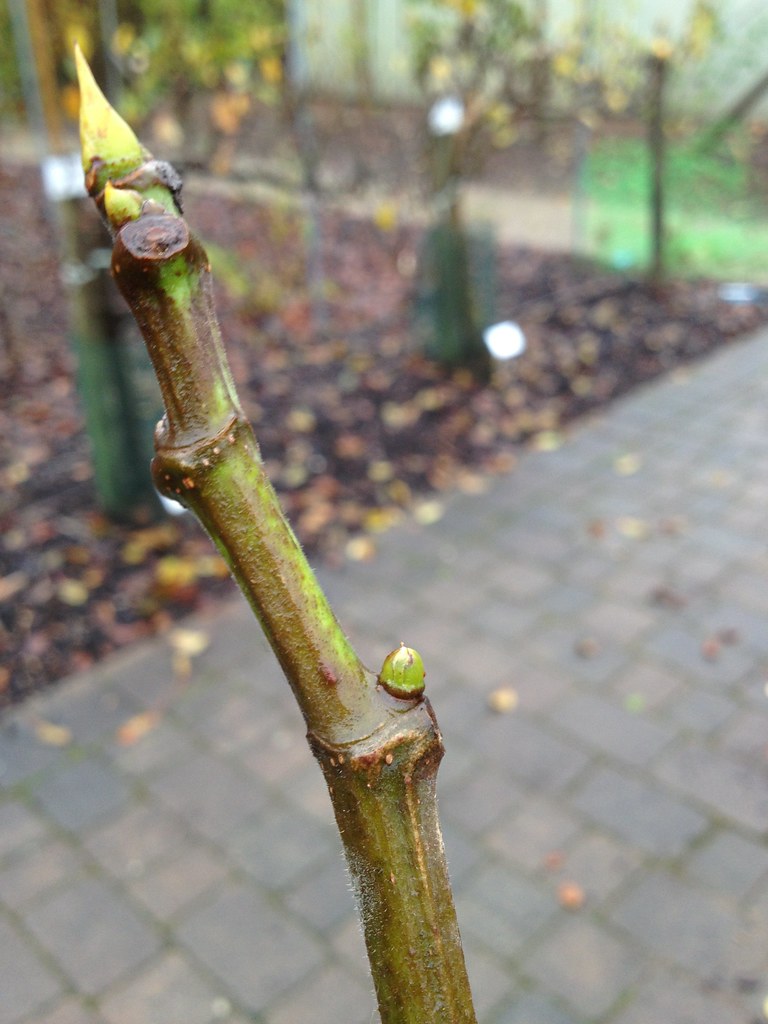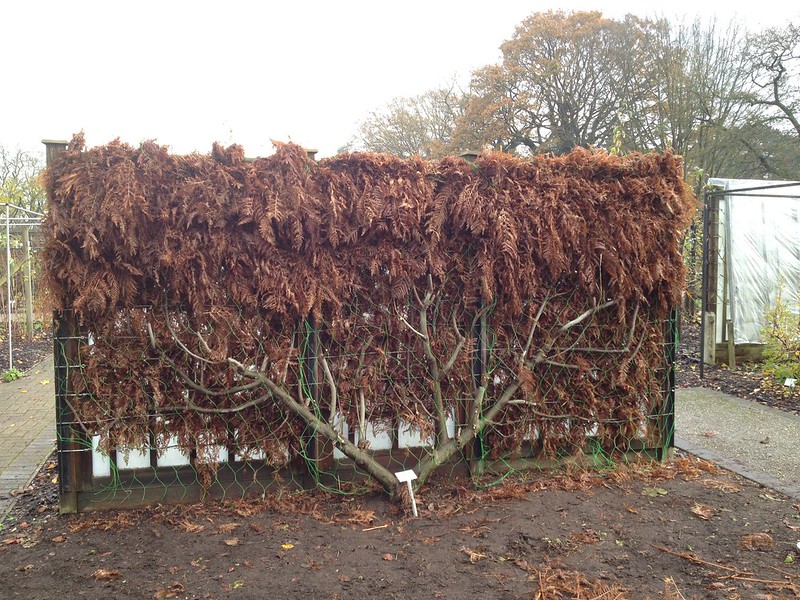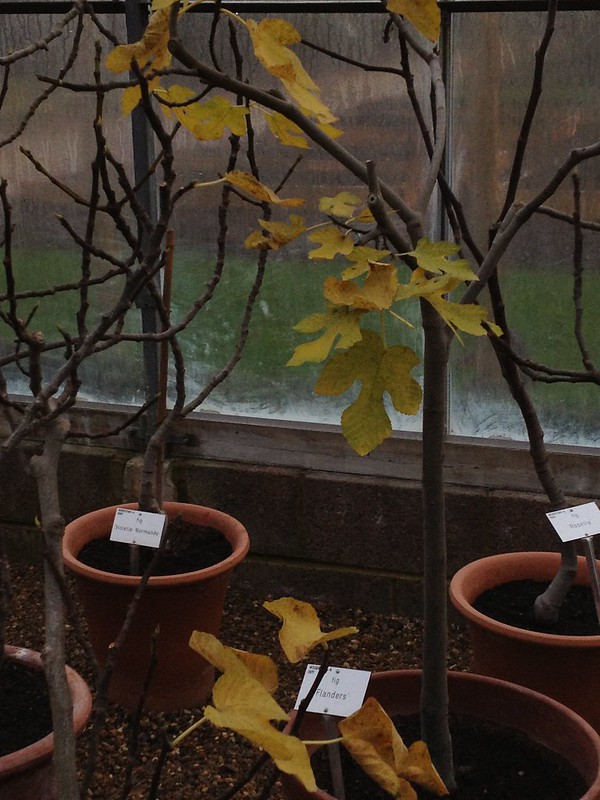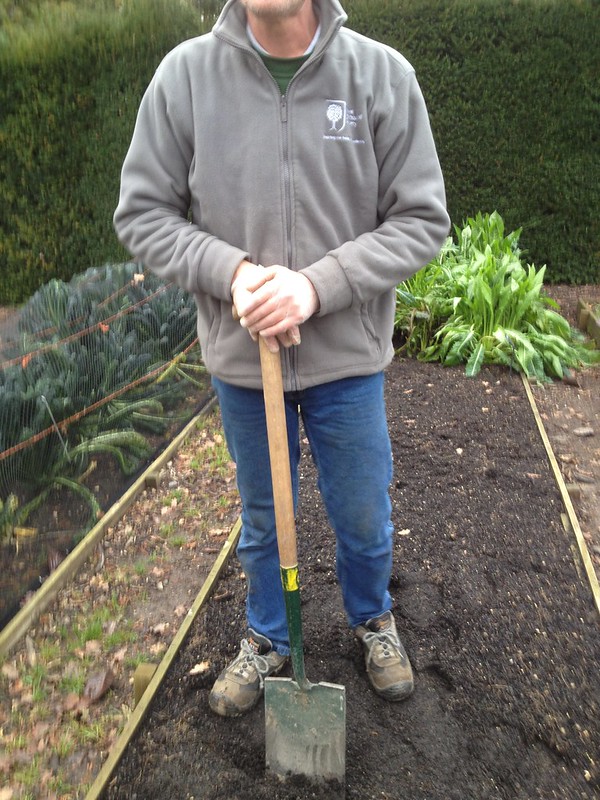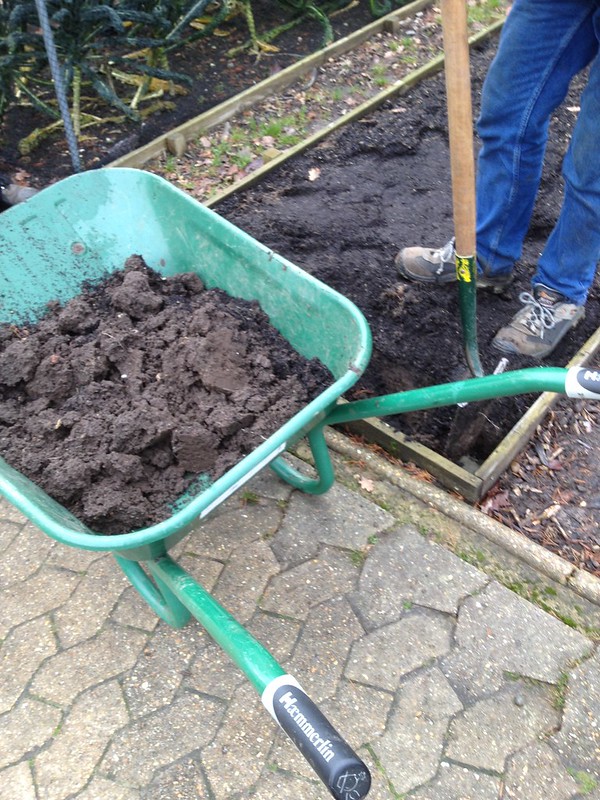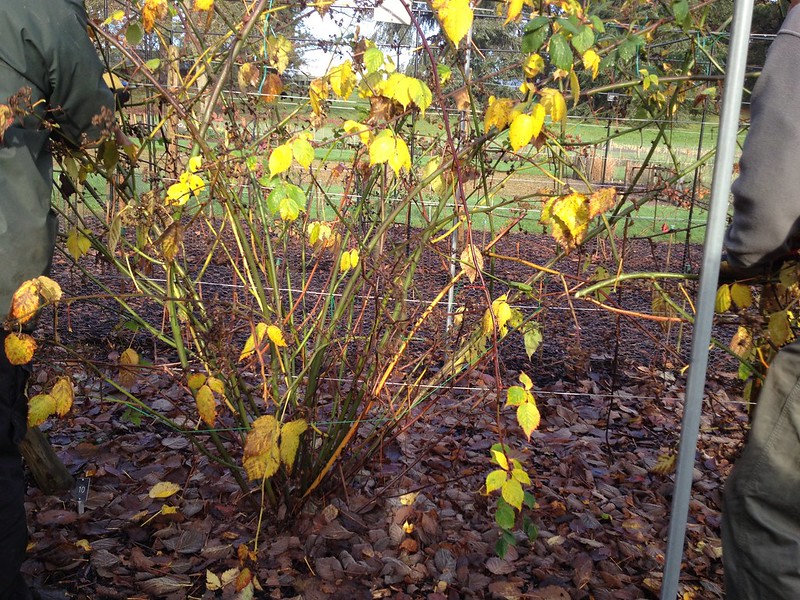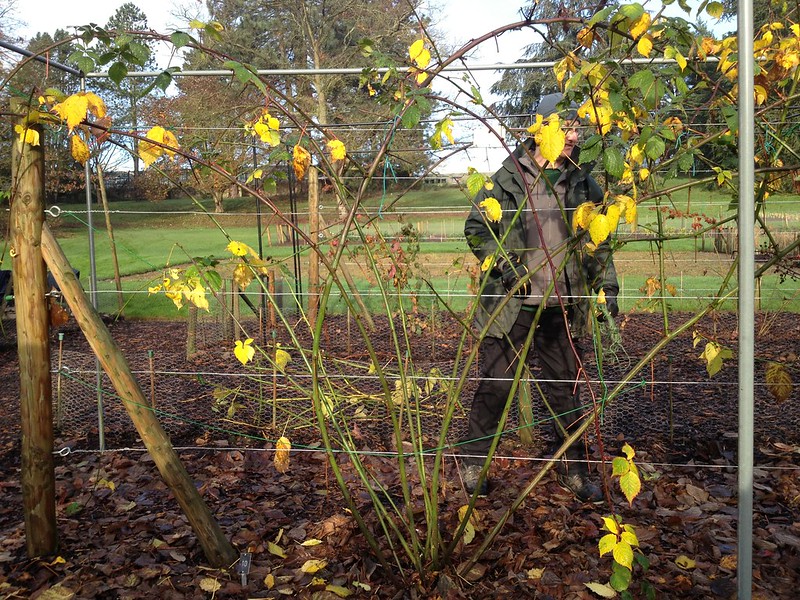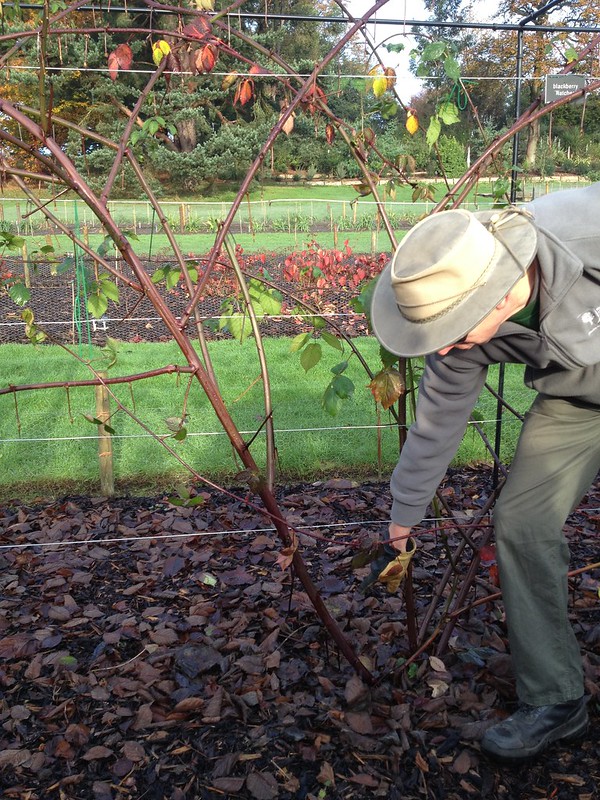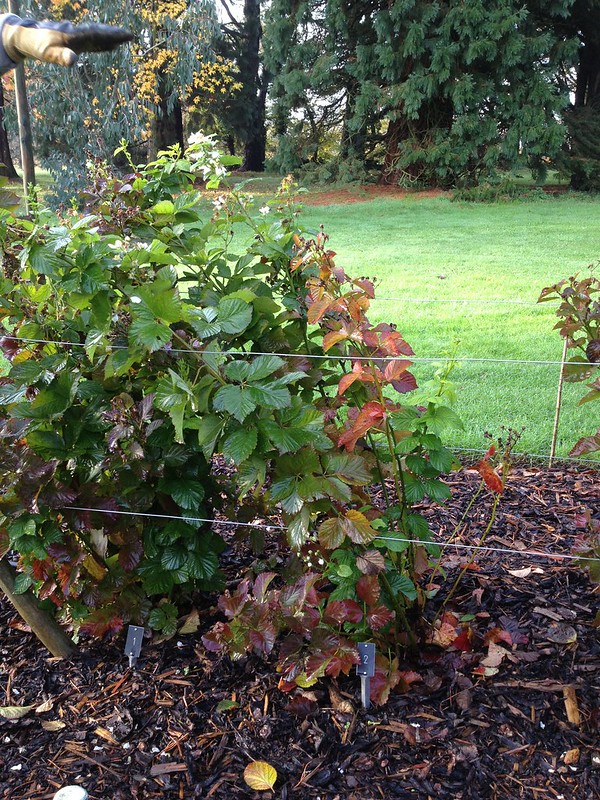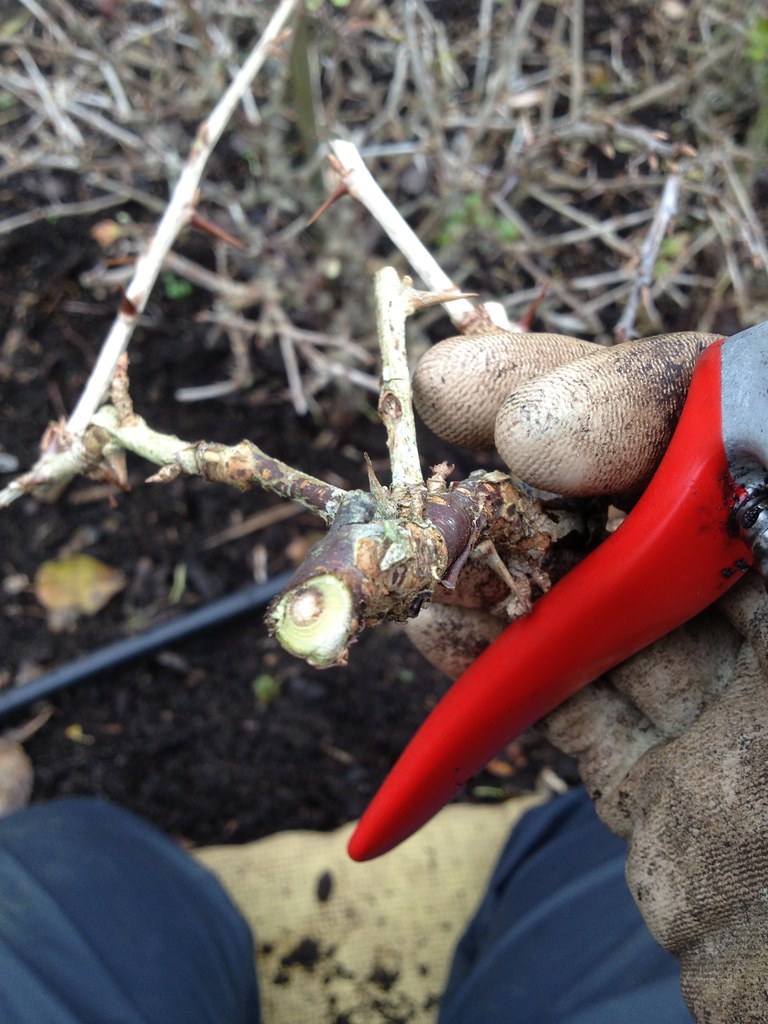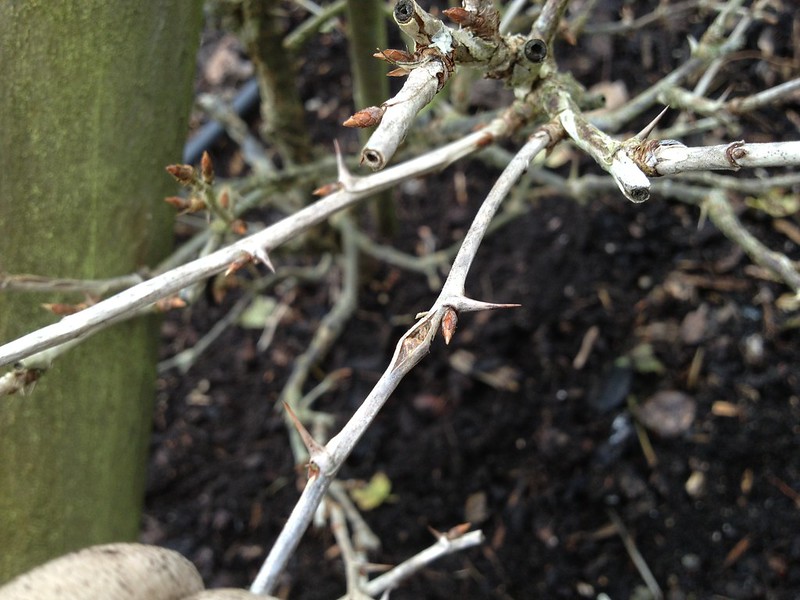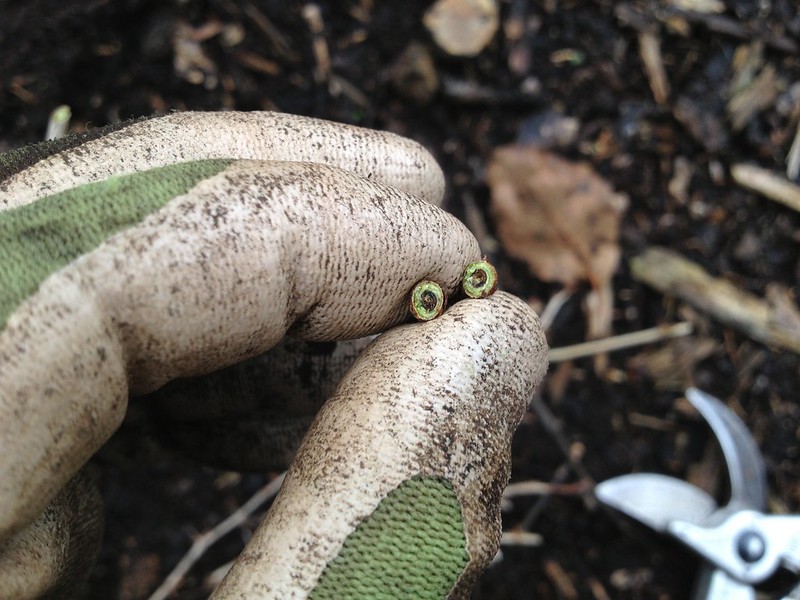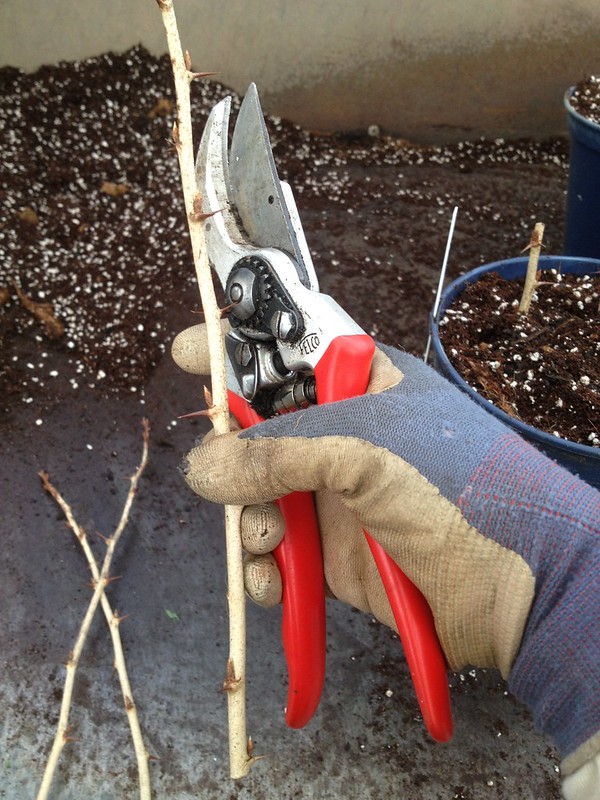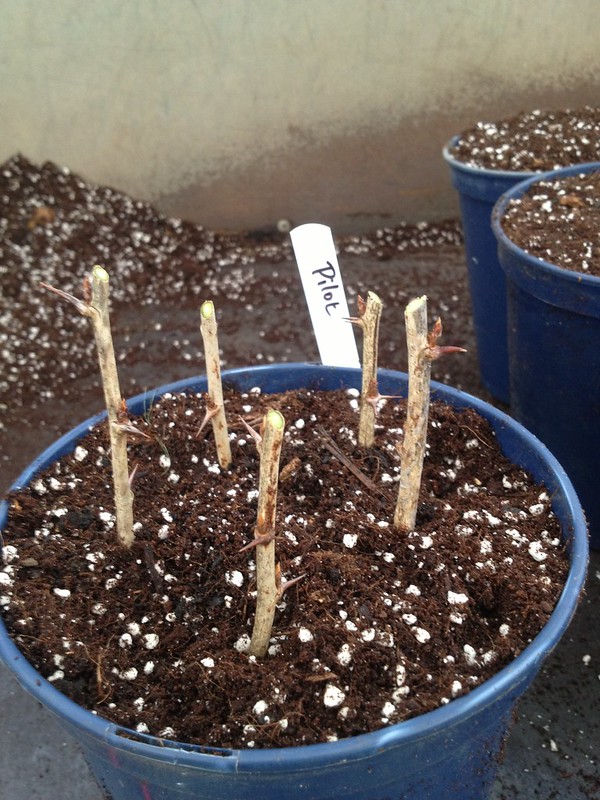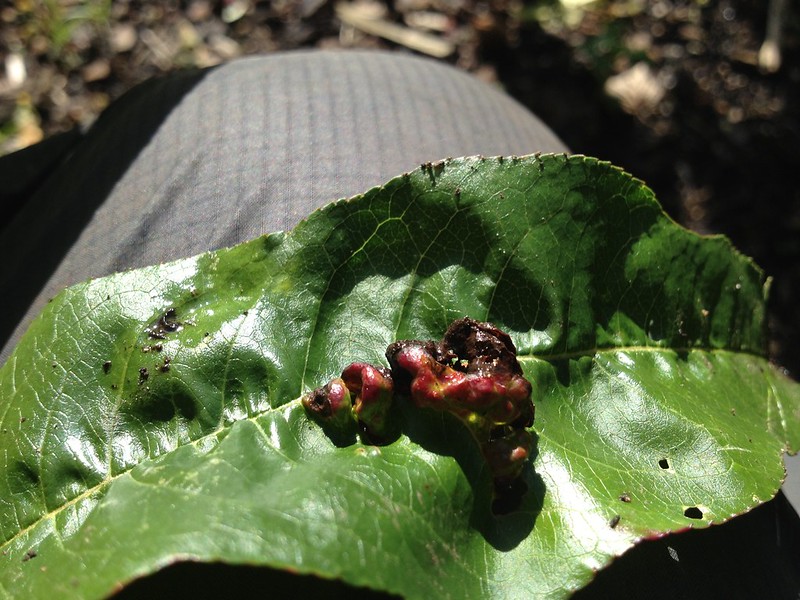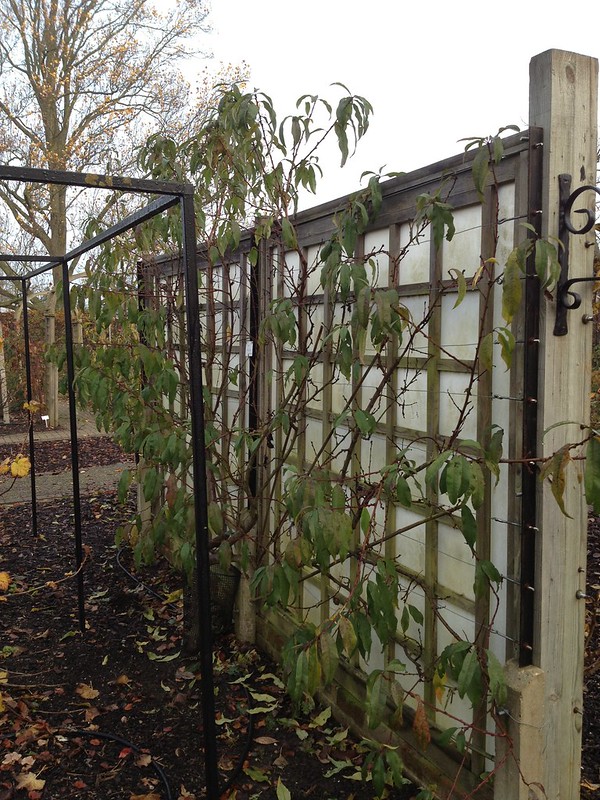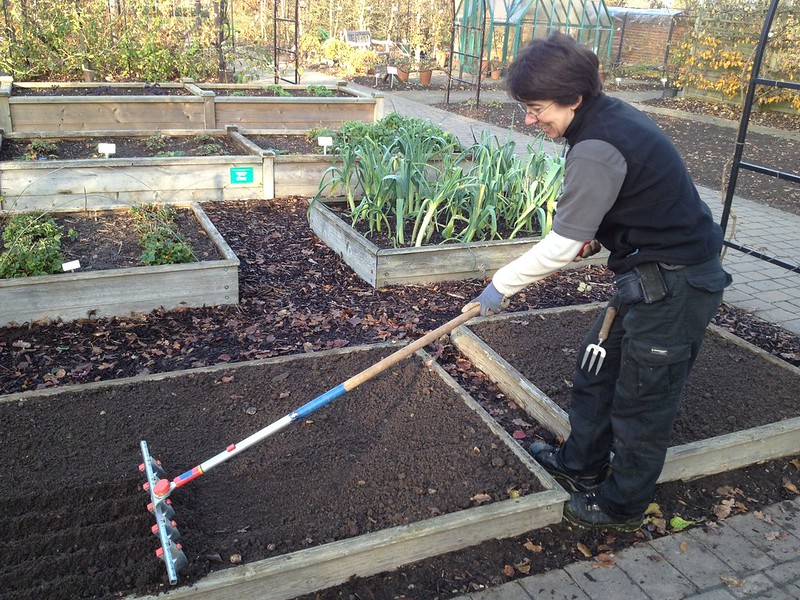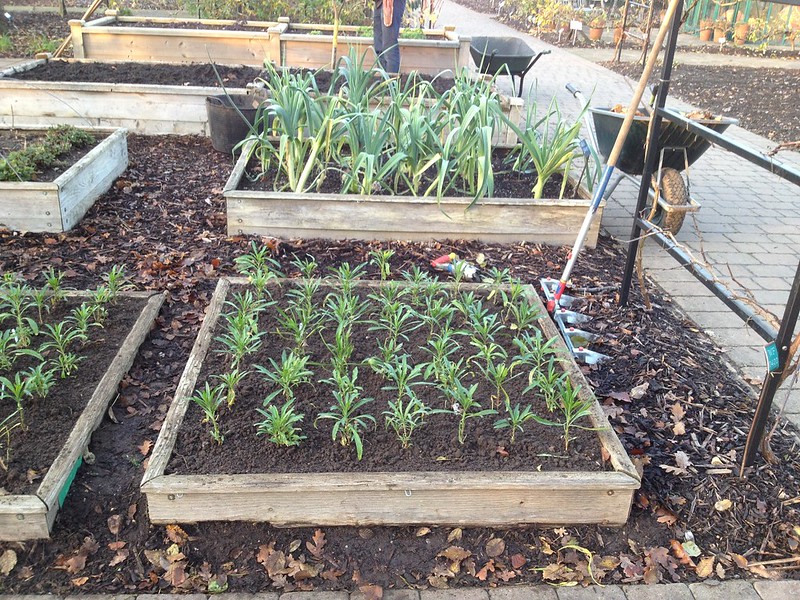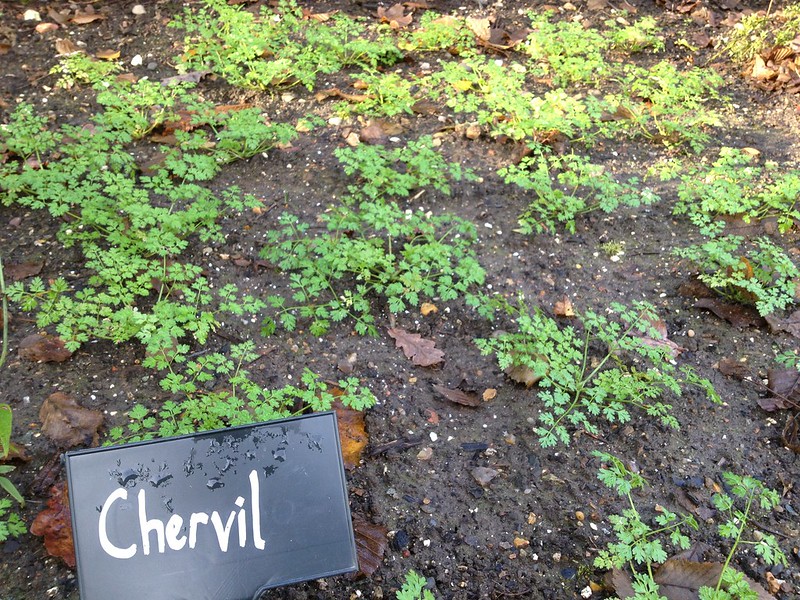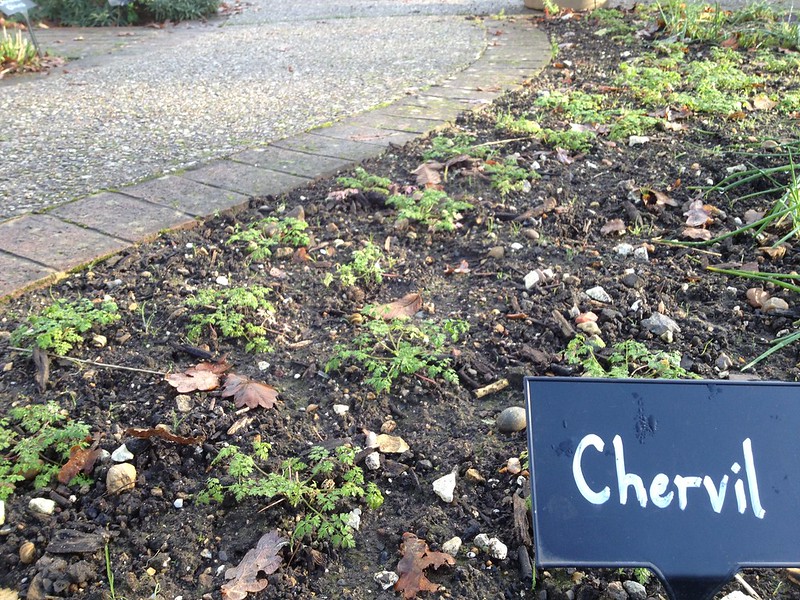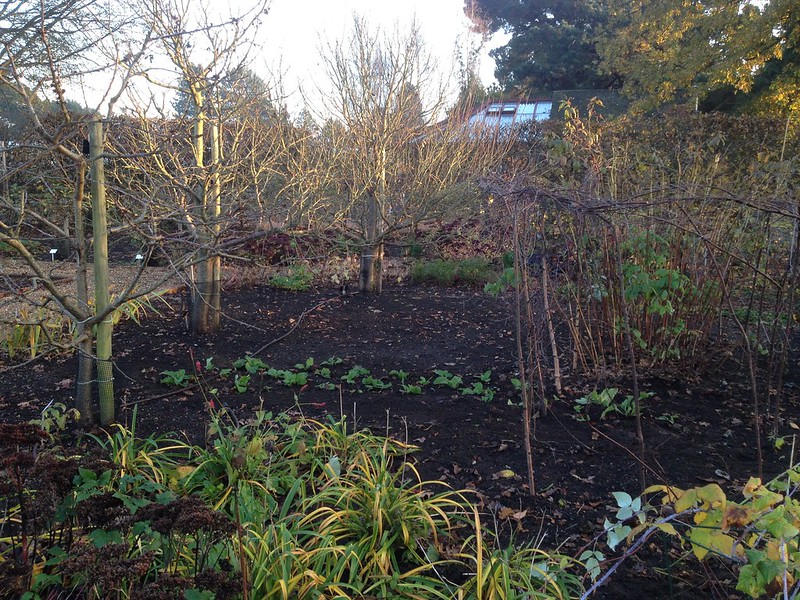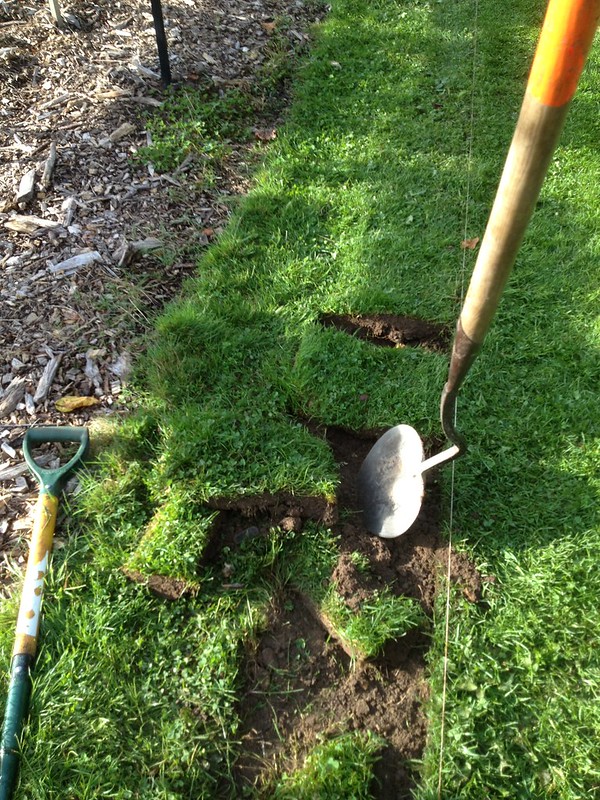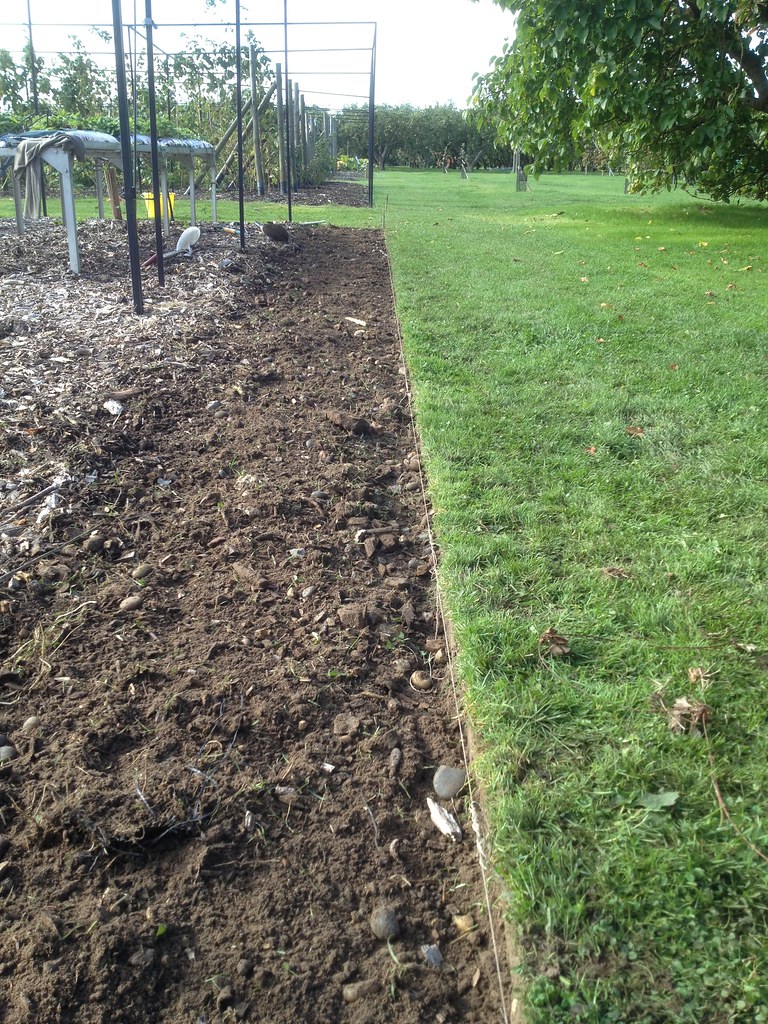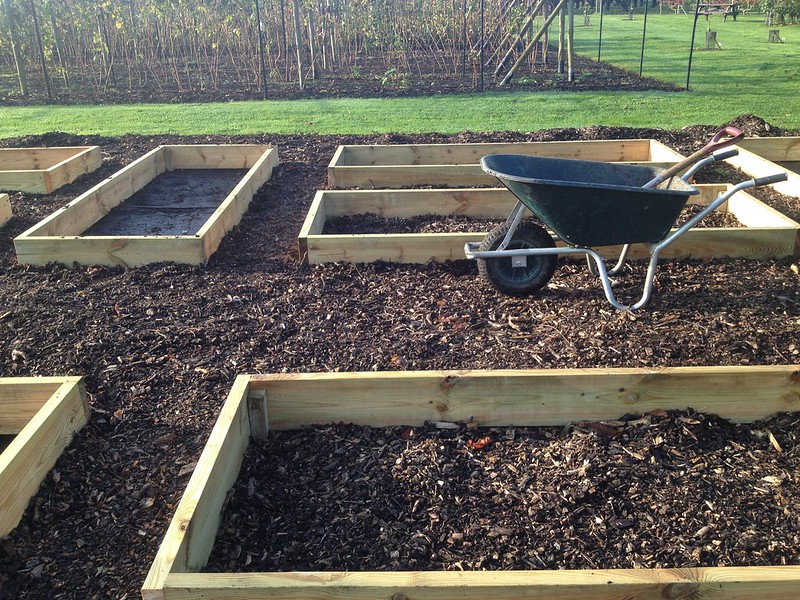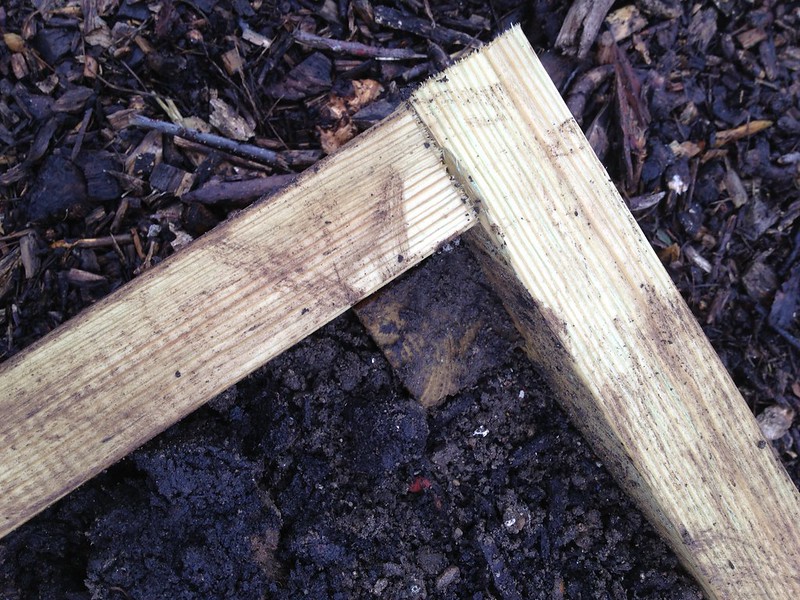As my dissertation for this year's traineeship will be on orchards, my colleagues suggested I attend the
Three Counties Orchard Conference with them, and a very interesting day it was as a range of stakeholders in top fruit production, from conservation to commercial, presented to us.
An introduction to the UK orchard scene by
John Edgeley of Pershore College started the days. John briefly outlined the three main orchards types out there:
- Commercial fresh fruit
- emphasis on fruit "quality" (and I write that in inverted commas, as it is in my opinion debatable what is intended by the word)
- cone shaped trees most light efficient
- reduced amount of pesticide linked to increase concern about wildlife conservation
- crop cover (among other things to enhance pollination)
- trials of mechanised tree trimming, windbrakes to increase temperature & pollination
- monitoring of fruit ripeness (iodine for starch etc)
- harvesting by hand but increased mechanisation (picking platforms and bulk bin trays)
- cold and controlled atmosphere (CA) storage
- Commercial processed fruit
- emphasis on fruit yield
- increased tree height (means more shade and shedding of bottom branches)
- new varieties to improve tree shape
- increase in sales has meant more plantings and new training opportunities
- harvesting: hand picked, allowed to fall, shaken from trees (shake and catch harvester)
- mechanisation means increased potential amage to soil structure
- soiling of fruit penalised by processors (grass for clean samples, washing impacts longevity)
- bruised fruit needs processing within 48 hrs
- Conservation orchards
- emphasis on conservation of landscape feature/genetic resource/wildlife habitat (i.e. Noble Chafer)
- new planting needed to fill gaps but finances a problem
- some income from sales of fruit; Heritage Lottery and Landfill Community Funds
- several projects ongoing
Sarah-Jayne Dunsby, recent graduate of the Royal Agricultural University, presented briefly her academic research on the "Future of Top Fruit Industry in the West Midlands", mentioning a issue I have heard from several other young farmers before: succession planning. She also mentioned that availability of (seasonal) labour is getting scarcer, a concern expressed by other speakers as well.
A commercial producer,
Michael Bentley of Castle Fruit Farms, introduced us to his recently created orchard where he grows trees for maximum efficiency by growing trees with double leaders, in order to maximise cropping and minimise labour (which takes up 2/3 of his costs - fuel electricity and fertiliser only adding up to 3% but pesticides costs running into the 20k/yr).
His key issues are:
- soil fertility (green waste at 3% N and fertigation to get the trees to full production within 5 yrs)
- mild winters causing poor vernalisation and pollination
- seasonal labour (he needs 30-35 people during the fruit season)
- pollination (he called bees "lazy pollinators" and is more keen to encourage moths, bumbles and hoverflies)
- pest control (pesticides kill the beneficial insects as well as the pests!)
- biodiversity
For the last 3 reasons above he manages headlands. Someone from the participants asked him whether, given his is an intensively managed orchard, he could not leave the odd tree to senesce as wildlife habitat, but apparently it would not be commercially feasible. The accepted practice is to rip out any dead tree, as they would cast shade (and light is a limiting factor to growth in the UK, in fact he can only grow his trees to 3 m high instead of the 4 m that are customary on the Continent) and reduce productivity: it costs 20-25k GBP to plant an orchard to last 15 yrs within which it has to yield a profit.
We then got to hear from
Dave Kaspar of Day's Cottage Farm, who restored with his partner the traditional orchard on their family farm under a no-spray, no artificial fertiliser system: 100 acres with widely spaced trees on a ridge & furrow land that creates a suitable microclimate. The trees are set in permanent pasture and the business produces juice, cider and perry, besides running the orchard as a skills centre.
With the great enthusiasm of the trainer and evangelist, Dave pointed out that traditional orchards were planted by hard-nosed farmers, not just for the environmental reasons we value them today, so restoring and operating them should come with a profit, and it does for them. Last year they managed to sell fruit for 7 months of the year, but they are also training the community to accept the fact that fruit - like all agricultural products - is naturally not there all year round.
And he finds his orchard is "fantastically biodiverse" (9 species of bat, 30 species of birds, 70 species of plant and 120 species of insects in his uninproved grassland) and that beekeepers are keen to take hives to his land because of the no-spray regime that is best for bees. Some funding he receives from Countryside Stewardship and Natural England schemes, and he got a grant from the Gloucestershire Environment Trust.
The day was concluded by a presentation of
Adrian Barlow, English Apples and Pears Ltd, the trade association, who run through the recent and prospective developments of the Industry:
- 1970s competition from Europe
- 1980s greengrocers and wholesalers model change
- 1990s causing a 36% reduction in hectarage
- 2000s consumer concerns about locally grown food and traceability, as well as chemical residues; "plant protection products" expensive for growers too; large investment in packhouses and coldstores about efficiency and more precise grading
A modern orchard contains about 4000 trees/ha and new varieties are yielding up to 70 tonnes/ha! I cannot quite picture such huge numbers in my mind: is that how people think of orchards?
But what really struck me is the amount of work that is placed in sensory and appearance research to decide which cultivars will be popular and on finding the right name to market them successfully... isn't it a curious world where only the apples with the right balance of colours on their skin get eaten? The current fad seems to be bi-colour and vibrant; green is off, being associated with acidity and so is yellow, thought to indicate over-ripeness!
Investment at the moment is stifled by concerns about recouping it on the market, and Russia has been a major importer, so when it closed to imports the market became really unbalanced. The market for apples and pears in the UK (dessert, culinary, cider etc) is just over 700,000 tonnes - I have tried to double check that on the Government's
Basic Horticultural Statistics but groupings of fruit are not entirely clear; in any case, we import about 2/3 of the apples we use (although there seem to be some support by the "multiples" for British products, that can fetch a 25% premium).
As this week I need to research apple cultivars for our Crop of the Week exercise, I have summarised below the considerations made about common and future cultivars as they were mentioned (together with some research I did myself for the homegrown market).
Most popular cultivars
Homegrown
Flavour, good storage quality,
Specific season (early, late), disease resistance, reliable cropping
Commercial
Sweet taste, firm and juicy texture, vibrant skin colour, no russeting/marks
‘Gala’ 26% of the market (up from 16% in 2003)
‘Braeburn’ 18% (up from 1% in 2003)
‘Rubens’ (earlyish)
‘Jazz’
‘Kanzi’ (NZ)
‘Zari’ (early, Sept apple)
‘Egremont Russet’ 35k tonnes/yr (of some 750k market) best sold traditional UK cultivar
‘Cox’s Orange Pippin’ 23k tonnes/yr
There is a marketing campaign on in UK for ‘Bramley’ organised by the
New cultivars
Homegrown
Novelty, local and traditional
T&M Apple 'Isaac Newton' (Malus domestica, Apple 'Flower of Kent') hefty cooking apples with an old-fashioned, bumpy shape
Frank P. Matthews ‘Little Pax®’ stunning spring flowers, from 19th century St. Cecilia’s Abbey on Isle of Wight
‘Rosette®’ sport or seedling of ‘Discovery’ red-fleshed from Worcestershire
Commercial
Good taste and flavour, free of defects and russeting, skin colour vibrant, rapid fruit production (within 5 yrs), fruit size (not too big) and consistency (80% at least of the fruit being class 1) at higher yields (up to 70 tonnes/ha); replace imports, new early varieties and sell later ones even later (i.e. 'Cameo' has potential). 'Sweet Sensation' new cultivar being tested; 'Opal' to get into the 'Golden Delicious' market.
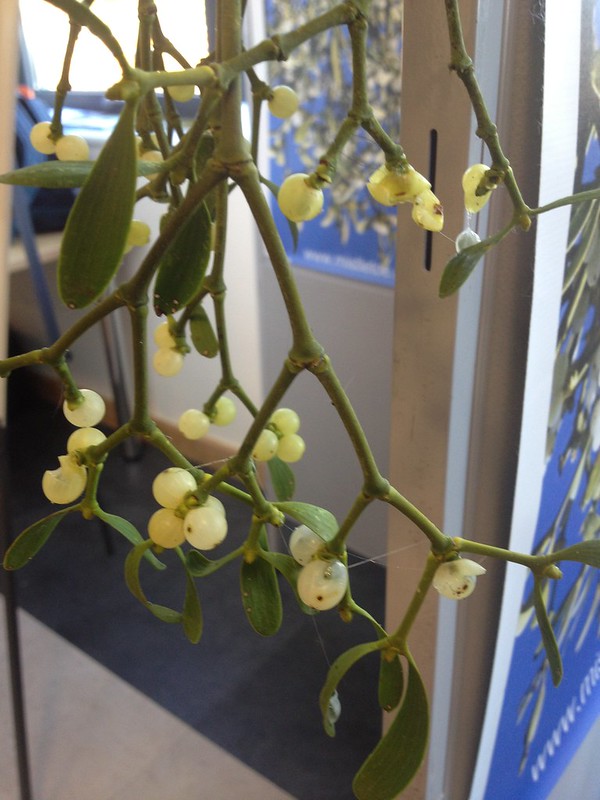 |
| Viscum album |
There were some stalls in the margins of the conference; the most interesting one for me was one about mistletoe (
Viscum album). Is it a welcome niche habitat or a threat to orchards? An opportunity for a side crop or a threat for the main one? It is endemic in the Three Counties and there is
a project trying to find out.

